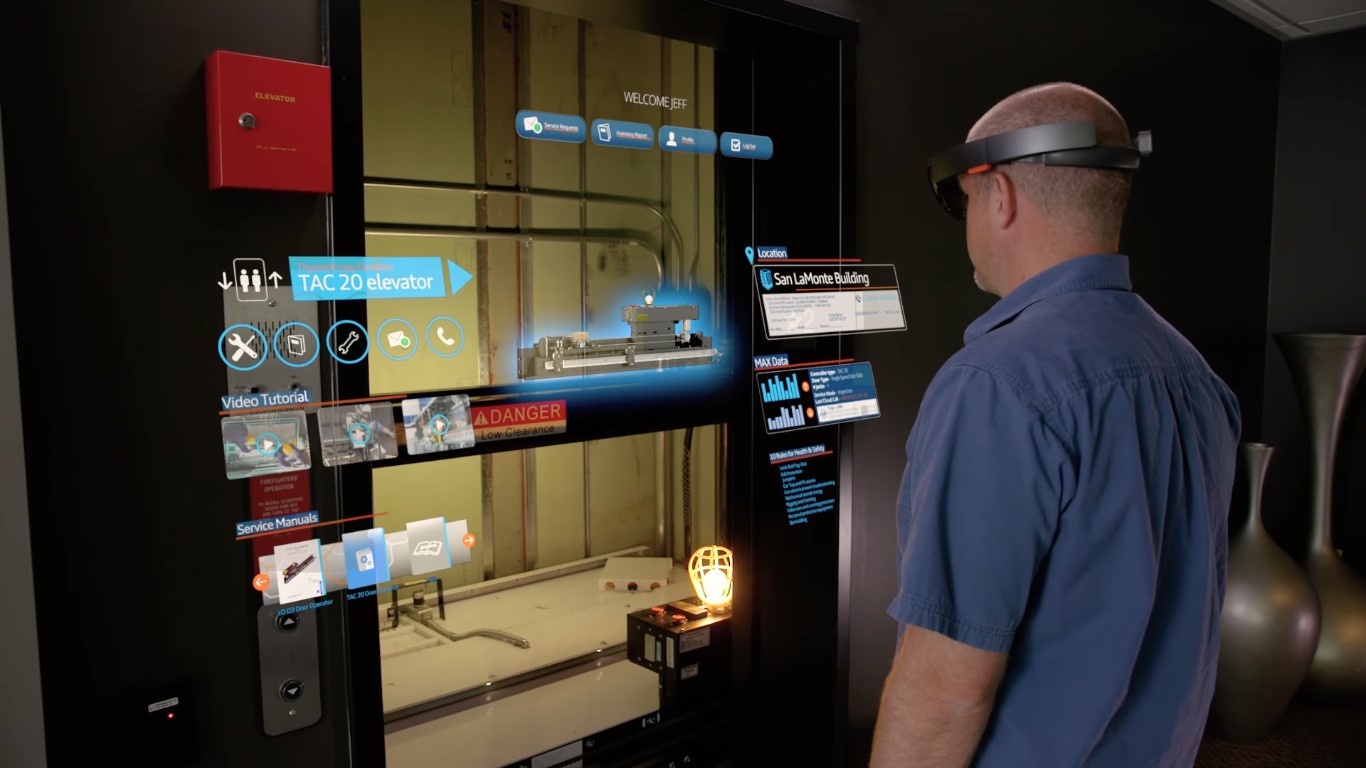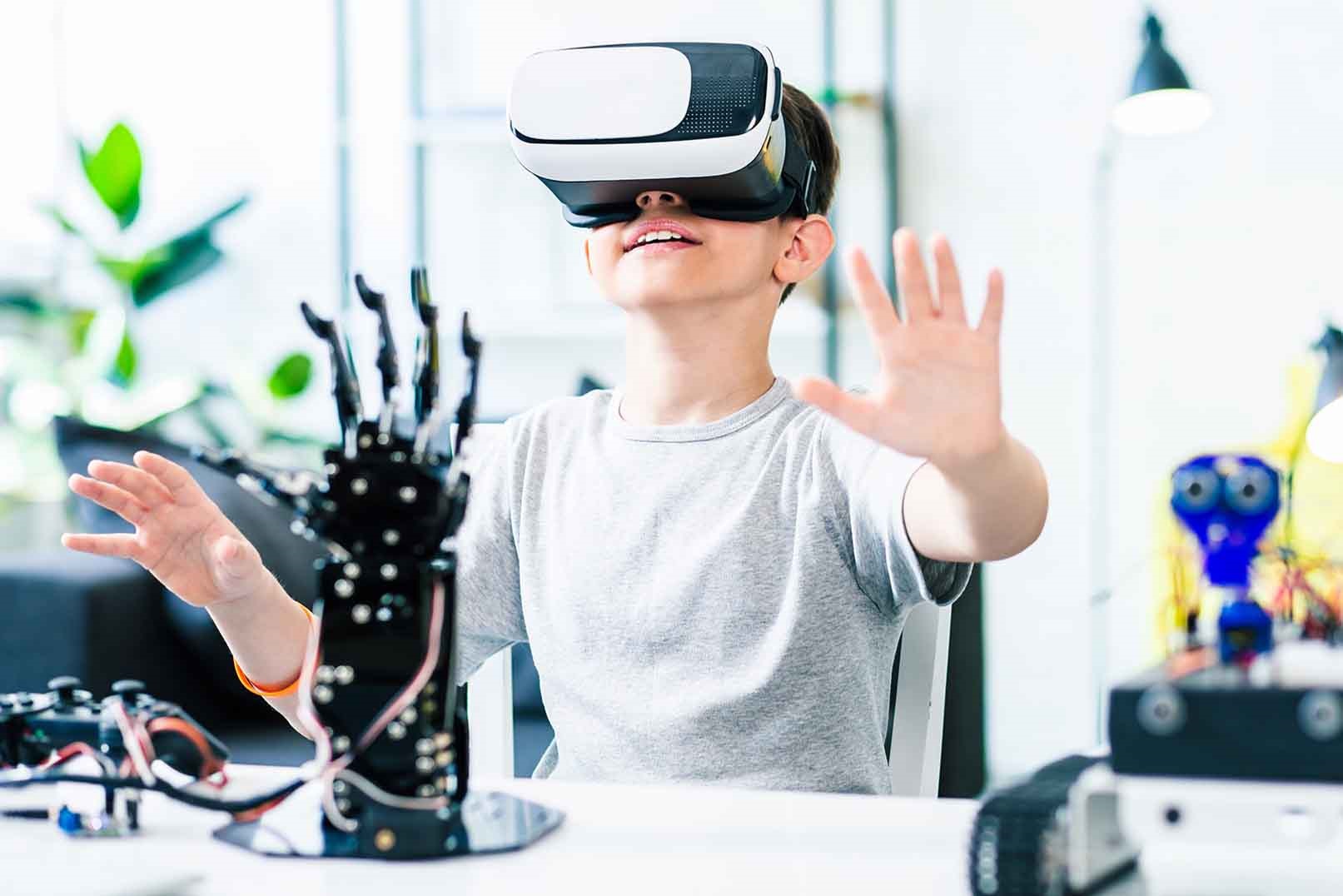Home>Latest News>Technology Trends>How To Get Into Augmented Reality


Technology Trends
How To Get Into Augmented Reality
Modified: September 5, 2024
Discover the latest technology trends and learn how to get into augmented reality. Stay ahead in the fast-paced world of AR with our expert tips and insights.
(Many of the links in this article redirect to a specific reviewed product. Your purchase of these products through affiliate links helps to generate commission for Techsplurge.com, at no extra cost. Learn more)
Table of Contents
What is Augmented Reality?
Augmented reality superimposes computer-generated images, sounds, or other sensory inputs onto the real world. Unlike virtual reality, which creates an entirely immersive digital environment, AR enhances the real world by overlaying digital information. This can be done using various devices such as smartphones, tablets, smart glasses, and head-mounted displays.
History of Augmented Reality
The concept of AR has existed for decades. Tom Caudell, an engineer at Boeing, first coined the term "augmented reality" in 1990. However, significant attention came in the 2010s. The release of Pokémon Go in 2016 marked a major turning point, bringing the technology to the masses and showcasing its potential for entertainment and social interaction.
Applications of Augmented Reality
Gaming and Entertainment
- AR Gaming: Games like Pokémon Go and Harry Potter: Wizards Unite offer immersive experiences blending physical and digital worlds.
- Entertainment: Applications include virtual try-on for fashion and beauty products, interactive museum exhibits, and live events.
Healthcare
- Medical Training: AR simulates surgeries and other procedures, enhancing the learning experience for medical students.
- Patient Education: Helps patients understand complex medical information by overlaying 3D models onto their bodies.
Read more: The Advantages of Augmented Reality
Education
- Interactive Learning: AR makes complex concepts more engaging. Students can visualize 3D models of historical sites or scientific structures.
- Language Learning: Provides interactive lessons using real-world objects to teach vocabulary.
Retail and Marketing
- Enhanced Shopping: Retailers use AR to allow customers to see how products look in their homes before purchasing.
- Interactive Ads: Brands create interactive ads that engage consumers in new ways.
Industrial and Manufacturing
- Improved Workflows: AR provides workers with step-by-step instructions and real-time data.
- Maintenance: Offers detailed instructions on how to repair equipment.
Getting Started with Augmented Reality
Read more: Augmented Reality Business Card
Understanding the Basics
Before diving into technical aspects, understanding the basics is essential. AR involves several key components:
- Hardware: Devices on which AR applications run. Common devices include smartphones, tablets, smart glasses, and head-mounted displays.
- Software: Programming languages and frameworks used to develop AR applications. Popular choices include Unity, Unreal Engine, and ARKit.
- Content Creation: Creating digital content that will be overlaid onto the real world. This can range from simple 2D images to complex 3D models.
Choosing Your Hardware
Selecting the right hardware is the first step in getting into AR. Here are some popular options:
- Smartphones: Most modern smartphones come with built-in AR capabilities. Apple's ARKit and Google's ARCore allow developers to create AR experiences for a wide range of devices.
- Tablets: Offer a larger screen size than smartphones, making them ideal for more complex AR applications.
- Smart Glasses: Devices like Google Glass and Vuzix Blade provide a more immersive AR experience by allowing users to see digital information directly in their field of vision.
- Head-Mounted Displays (HMDs): Devices like Microsoft HoloLens offer a more advanced AR experience with higher resolution and better tracking capabilities.
Learning Programming Languages
After choosing hardware, learning the programming languages and frameworks used in AR development is crucial. Here are some popular choices:
- Unity: One of the most widely used game engines in the world, supporting AR development through its AR Foundation package.
- Unreal Engine: Another powerful game engine supporting AR development with ARKit and ARCore integrations.
- JavaScript/HTML/CSS: Commonly used for web-based AR experiences and can be used with frameworks like A-Frame.
- Python: Often used in machine learning and computer vision tasks essential for AR development.
Creating Your First AR Project
With hardware chosen and programming languages learned, it's time to create your first AR project. Here’s a step-by-step guide:
-
Set Up Your Environment:
- Install necessary software development kits (SDKs) for your chosen platform. For example, if using Unity, install the AR Foundation package.
- Set up your development environment with the necessary tools and plugins.
-
Create Your Content:
- Design and create digital content to be overlaid onto the real world. This can include 2D images, 3D models, and interactive elements.
- Use tools like Blender or Maya for creating 3D models and textures.
-
Write Your Code:
- Set up the basic structure of your AR application. This includes initializing the AR session and setting up the camera.
- Use APIs provided by your chosen platform to track the user's environment and overlay digital information accordingly.
-
Test and Debug:
- Test your application on different devices to ensure it works seamlessly across various hardware configurations.
- Debug any issues that arise during testing using built-in debugging tools or logging mechanisms.
-
Publish Your Application:
- Once satisfied with your application's performance, publish it on app stores or distribute it through other channels.
- Promote your application through social media and other marketing channels to reach a wider audience.
Learning Advanced Techniques
After creating your first AR project, learning advanced techniques can enhance your skills further. Here are some areas to focus on:
-
Computer Vision:
- Essential for AR as it involves processing visual data from the camera feed. Learning about computer vision concepts like object detection and tracking can help create more sophisticated AR experiences.
-
Machine Learning:
- Machine learning algorithms can improve the accuracy of object recognition and tracking. Learning about machine learning frameworks like TensorFlow or PyTorch can help integrate these algorithms into AR applications.
-
3D Modeling and Animation:
- Creating high-quality 3D models and animations is crucial for immersive AR experiences. Learning about 3D modeling tools like Blender or Maya can help create detailed models that look realistic in AR.
-
User Experience Design:
- User experience design is critical in AR as it involves creating intuitive interfaces that users can easily interact with. Learning about UX design principles and best practices can help create more user-friendly AR applications.
Final Thoughts
Getting into augmented reality requires a combination of technical skills, creativity, and patience. By understanding the basics of AR, choosing the right hardware, learning programming languages, creating your first project, and learning advanced techniques, you can tap into the full potential of this exciting technology. Whether interested in gaming, education, healthcare, or retail, AR offers endless possibilities for innovation and improvement. Start your AR journey today. The future is augmented.













